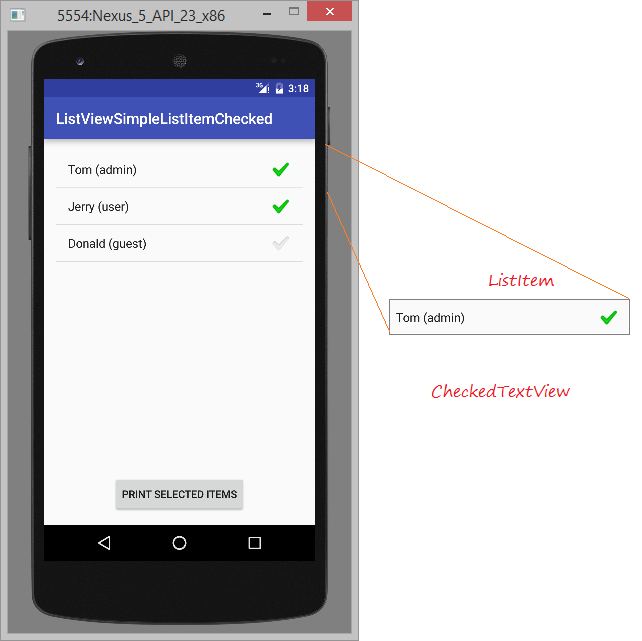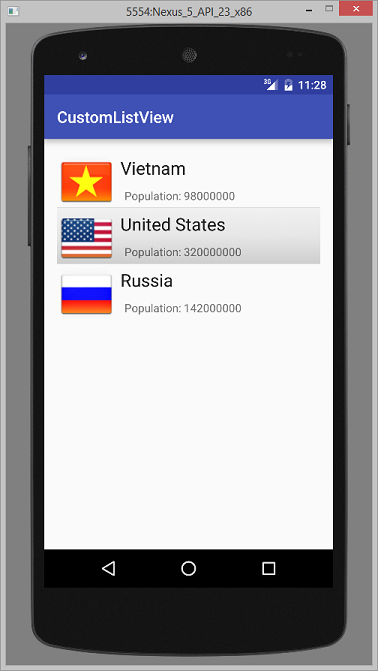

The first step therefore is to create a model flexible enough to support all the types (i.e Post) and embed a mechanism to determine the type. Keep in mind that each item in this list should be implemented with a common base model. Suppose we wanted to implement a heterogenous list of items in an application. In particular, there are special methods to be overridden within an adapter such as getItemViewType, getViewTypeCount specifically for these situations. To implement a heterogenous list of items, most of the work is done within the adapter. Another example would be Facebook with the many different types of feed items.

Examples include a Tumblr client where each post might be an image, text or a video.

In other words, different items in the list need to be represented differently. In certain situations, we need to implement a ListView where there are different types of rows in the same list.


 0 kommentar(er)
0 kommentar(er)
